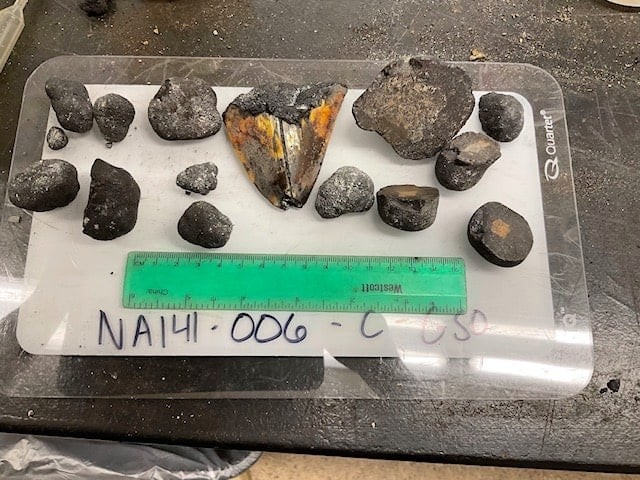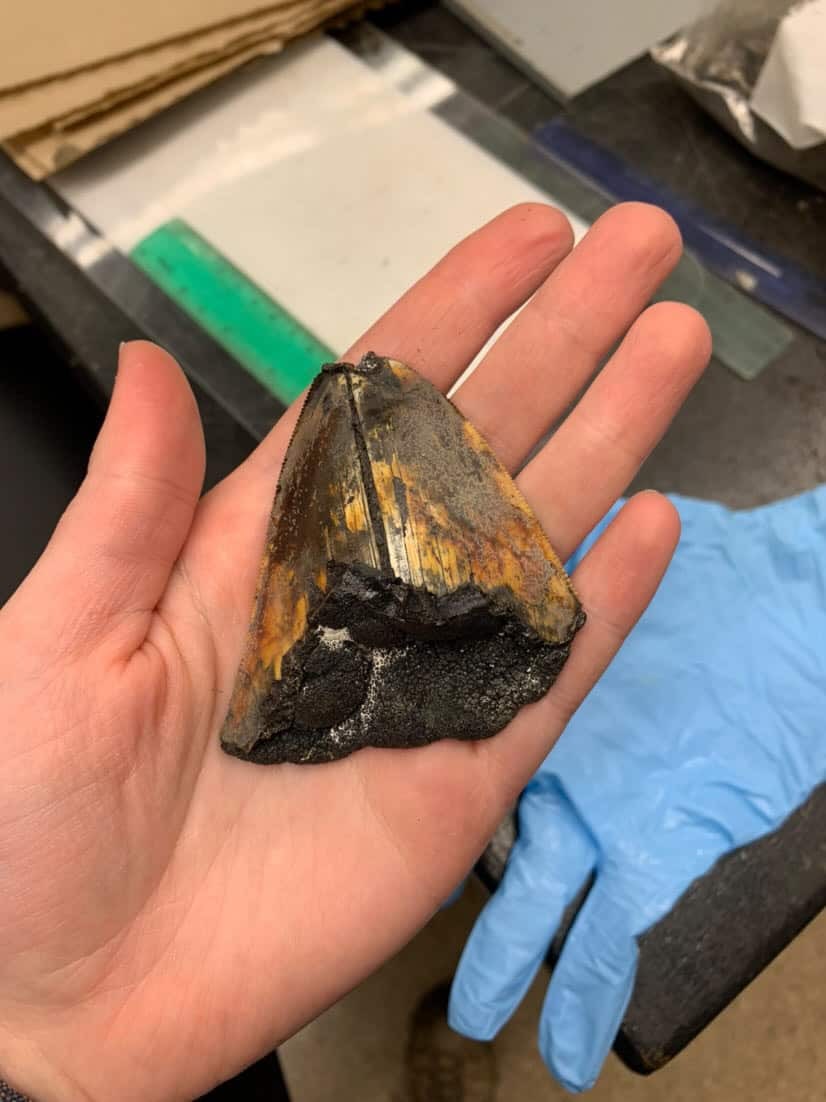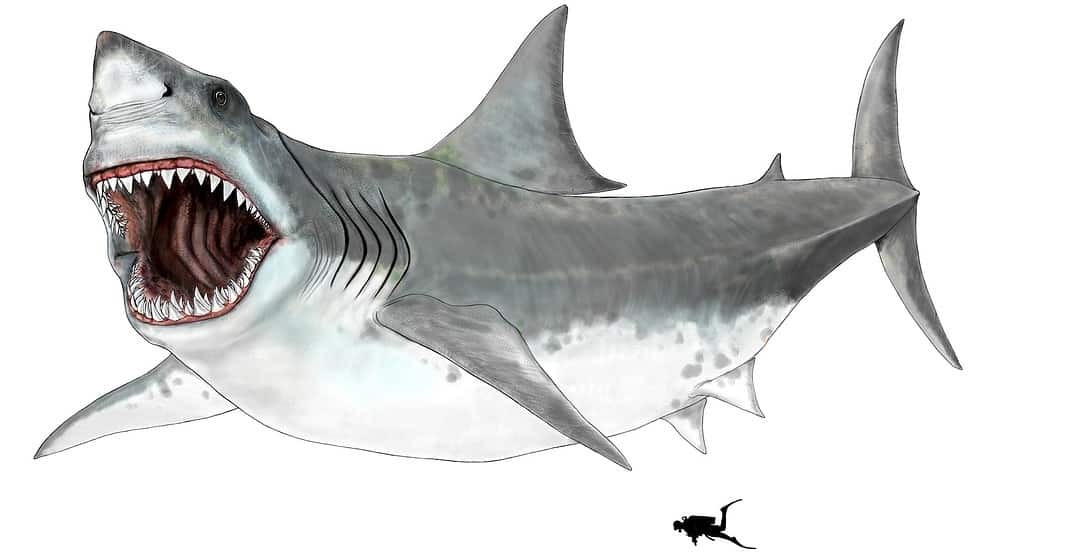Scientists recently documented the first in situ discovery of a fossil tooth of a megalodon shark from the deep sea in the Pacific Ocean.
The fossil was collected at a depth of over 10,000 feet (3,090 meters) by a remotely operated vehicle (ROV) on an expedition by the Ocean Exploration Trust (OET)’s vessel E/V Nautilus while exploring a never-before-surveyed seamount about 150 miles/241km south of Johnston Atoll.
The megalodon — specifically the megatooth shark Otodus (Megaselachus) — species was among the largest sharks ever to inhabit the planet but went extinct approximately 3.5 million years ago.
Collected during a three-week expedition that explored previously unsurveyed deep-sea habitats in the Johnston Unit of the Pacific Remote Islands Marine National Monument, the tooth represents the first reported case of an in-situ observation and subsequent sampling of a fossil megalodon tooth in the deep sea.
Deep-sea fossils are typically collected by dragging nets on the bottom of the seafloor, a methodology that doesn’t allow scientists to determine the exact sampling location, contextual information that is crucial for scientists to determine how fossils formed and what led to their current state.

According to Nicolas Straube, an associate professor at the University Museum Bergen in Norway and co-author of the study:
“This is an amazing find and is interesting in several aspects. The fossil was discovered at a very remote deep-sea locality from which megalodon fossils are rarely documented. Further, its partial encapsulation with manganese suggests that fossil shark teeth are an ideal basis for manganese accumulation.”
The expedition’s geological samples become publicly accessible resources for researchers worldwide and are shipped to the University of Rhode Island’s Marine Geological Samples Laboratory for cataloging and storage. There, the curatorial team of researchers processing the samples spotted ridged edges, an unusual feature for these types of rocks.
After scraping off the ferromanganese coating, the research teams of Dr. Katherine Kelley and Dr. Rebecca Robinson realized they were looking at a shark tooth and speculated that it may have belonged to the megalodon shark.

This identification was confirmed by shark expert Dr. Dave Ebert, President of the American Elasmobranch Society and research faculty at Moss Landing Marine Laboratories, due to its size, shape and serration patterns.
Daniel Wagner, OET Chief Scientist and co-author of the study, said:
“This discovery highlights the value of multi-disciplinary collaboration. Geologists, biologists, paleontologists, and experts in other disciplines all worked together as part of this study, which included important contributions from experts representing eight different institutions in four different countries. By working together, we can learn so much more about our largely unexplored ocean.”
Fossilized megalodon teeth are commonly found near shorelines where fossil beds are exposed to wave action or rivers. The majority of findings occur in locations that are easily accessible from land, while the deep sea remains largely unexplored.
Ferromanganese is a black mineral deposit that precipitates extremely slowly from seawater and coats objects found on the deep ocean floor. These mineral deposits form at an average rate of a few millimeters per million years and their thickness can be used to date objects covered by this coating.

